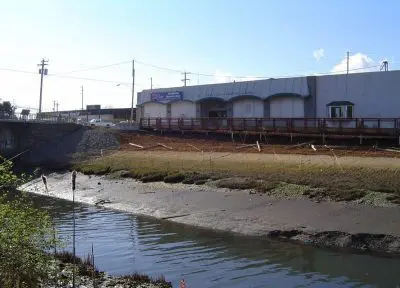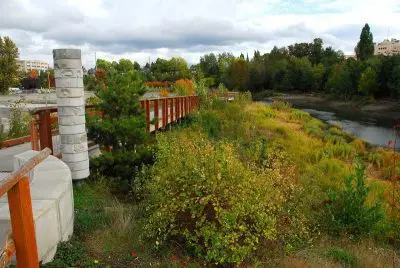Whatcom Creek drains an area of approximately 7.7 square miles, originating from Lake Whatcom. The stream flows from Lake Whatcom, east to west for approximately 4.3 miles before reaching Bellingham Bay. The four major tributaries at the eastern end of Whatcom Creek are Hannah Creek, Fever Creek, Cemetery Creek and Lincoln Creek. According to WDFW, Whatcom Creek currently supports runs of coho, chum and Chinook salmon, and steelhead trout. Spawning surveys have also documented a healthy population of resident and sea-run cutthroat trout.

Whatcom Creek and its tributaries are listed on the Washington Department of Ecology’s 303(d) list as impaired for temperature, fecal coliform, and dissolved oxygen. Habitat restoration on Whatcom Creek works to address issues of temperature and dissolved oxygen through protection of critical areas and enhancement of riparian areas. Fecal coliform issues are being addressed through multiple City programs and include dog waste pickup stations along Whatcom Creek, pet owner outreach and education, and homeless camp cleanups.
Enhancement of Whatcom Creek’s riparian area has been ongoing since the early 1990’s. Community interest in Whatcom Creek increased following the Olympic Pipeline explosion and fire in 1999. The settlement agreement provided funds for restoration of in-stream habitat and riparian areas within the burned area as well as for several large in-stream restoration projects that were completed in 2006 and 2008.
The following reports are now available:
- Whatcom Creek Post-Fire Evaluation – 10 Years After (PDF)
- Whatcom Creek Ten-Years After Summary Report (PDF)
- Whatcom Creek Restoration Project Report 2009 (PDF)
- Whatcom Creek Restoration Project Report 2007-2008 (PDF)
- Long-Term Temperature and Shade Monitoring of Whatcom Creek(PDF)
Washington Conservation Corps (WCC) Crews, sponsored by the City of Bellingham, have also been working to restore riparian areas along the entire length of the creek including the estuary. Since 2003, the City-sponsored WCC crews have planted over 100,000 native shrubs and trees, removed thousands of yards of invasive plants, and restored numerous sites in the riparian corridor along lower Whatcom Creek. Efforts continue today as additional riparian projects are developed.
Related Documents
Whatcom Creek Estuary Restoration Photos
Resources
Whatcom Creek Watershed Map
City Restoration Sites
Water Quality
Public Works Contacts




